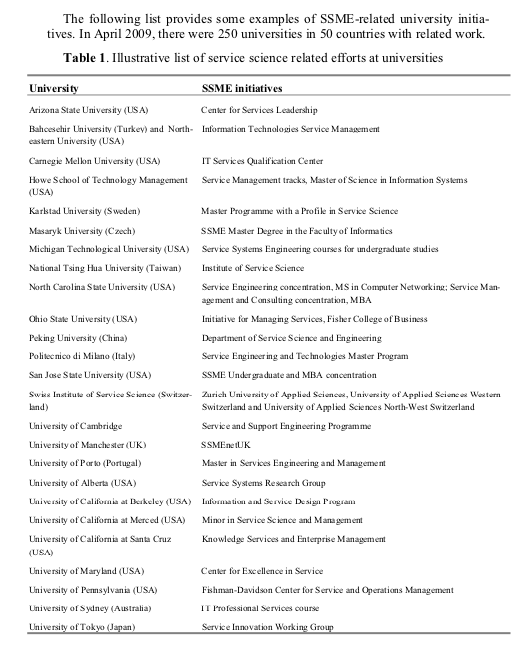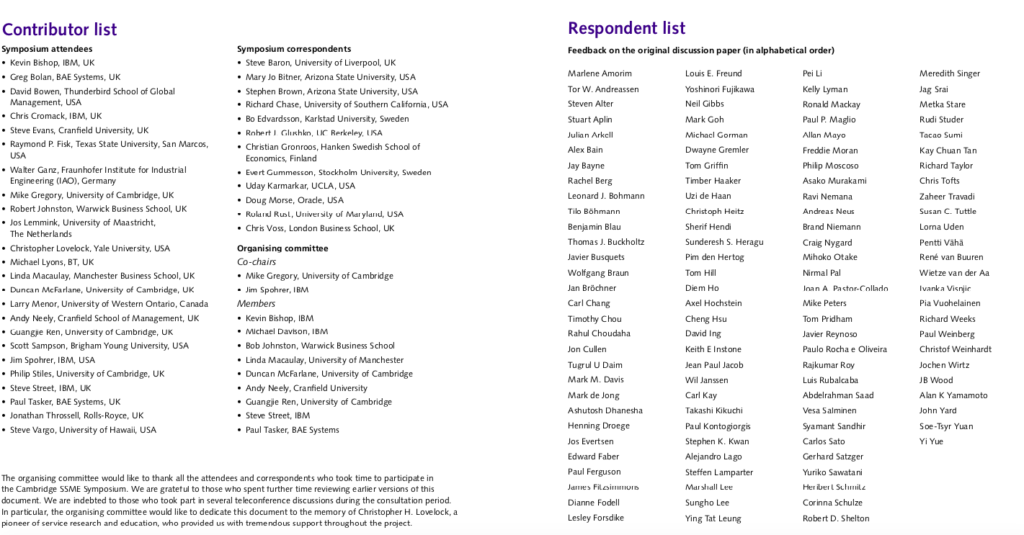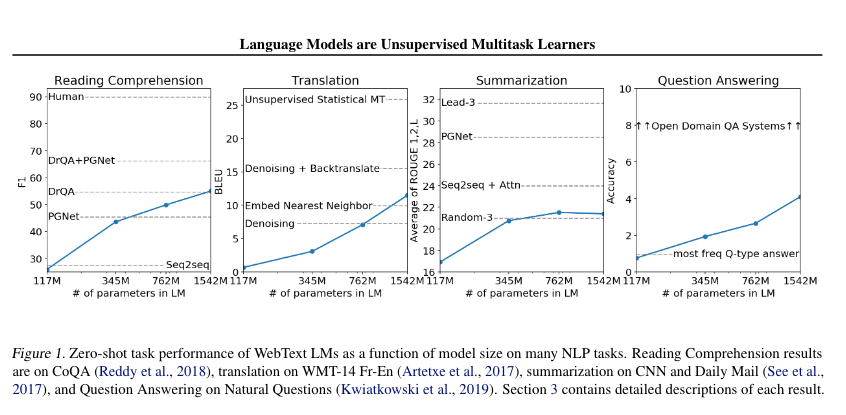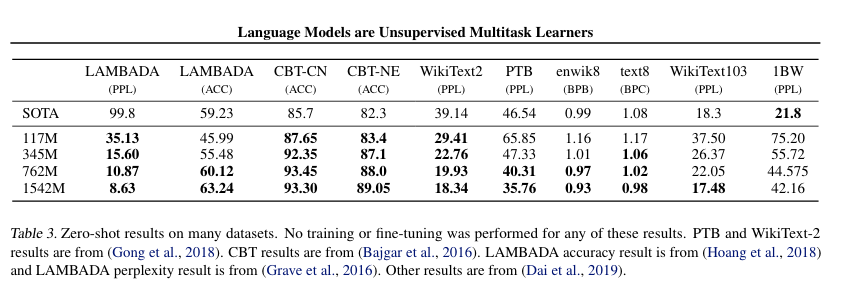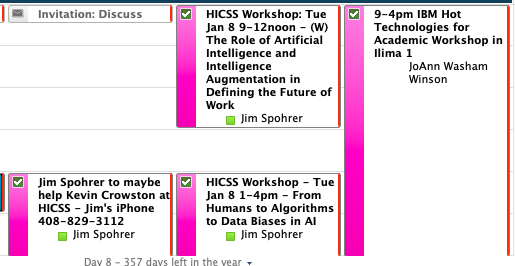Here is my thought experiment, and I welcome your criticism of it:
The gist of my argument is that (from a service science perspective) there are named resources in the world that people communicate about (with words), and they fall into four categories based on two dichotomies (also words/phrases):
(1) physical (e.g., physicist are the authorities, example, my cup of tea this morning),
(2) non-physical (e.g., physicists again the authority, examples are abstract ideas, ghosts, etc.)
(3) with-rights (e.g., lawyers are the authorities, example, you and me, but also businesses and nations)
(4) without-rights (e.g.,lawyers again are the authorities, example, our possessions, my coat, most animals and plants, etc.)
Of course, physicists and lawyers argue about boundary cases, and these categories are socially constructed, as are the roles that are the authorities – so in that sense all is social, including technologies. Physicists like to talk about what is physical, even if our species did not exist – as a way to respond to the latter. So perhaps objectively the physical and non-physical is the strongest of the two dichotomies – and named objects can shift from one side to the other over time…. but even there, people have faulty knowledge, so we have to accept these are not absolute categories and boundaries – but perhaps useful for certain purposes, again a social construct agreed to or disagreed to by people.
Once we accept these four types of resources as useful for some purposes (physicists and lawyers purposes), we can then examine disciplines.
Four streams of named concepts in history, one without people and three with people, but first a story… : A Swedish physicist working alone or with a group might discover evidence of a new element, called Gummessonium. However, an American physicist disagrees with the evidences, and says the element is merely an isotope of Spohrerium, and so they go ask a Japanese physicists who they both respect to determine, is there a new resource/element, or not? Eventually, after much technical work (reproducible technical work that a robot could do eventually) and much social work (teams of smart people arguing and weighing the evidence) the textbooks are updated, and a Swedish physicist gets the Noble prize for discovering Gummessonium. The Swede was right, and the American was wrong about the discovery – and history records this fact. Later, an American entrepreneur discovers that Gummessonium can be used as a clean energy source to power spaceships, and becomes the world’s first trillionaire, for his company Gummessonium, Inc. – history records this fact. The physical universe (real capabilities and constraints) and our social universe (agreed upon rights and responsibilities) unfold in a series of “facts.”
In the following paper, my co-authors and I write about four streams – (1) the universe stream that happens without people across time (physicists explain this stream to us eventually), (2) the physical discovery stream that happens across time as physicists give meaning to named discoveries such as Gummessonium (physical), (3) education stream eventually teaches the next generation of people about things in textbooks (what is taught in textbooks, concepts like evolution or abortion are very political, and so lawyers may have to get involved to allow things to be taught) , and (4) the legal stream is when new laws or companies come along that refer to the concept (lawyers explain this stream to us eventually). The examples in the paper deal with “The Big Bang” and “Transistors” … the important point is that there are times in history when the named concept came into existence, and it was used for a social purpose first.
So returning to disciplines, artificial intelligence has not been solved technically. No one has built a real artificial intelligence with commonsense reasoning yet. We have plenty of natural intelligence in the world (people), but no real artificial intelligence (in spite of the hype). Someday the technical accomplishment of artificial intelligence with commonsense reasoning will be realized – most predict, including myself in about 20 years for narrow AI, and about 40 years for general AI at about $1000 per digital worker.
However, just because AI is solved technological, does not mean that society has adjusted with laws to incorporate AI in all the places that capitalists or others would like to use AI. Some people will want to “marry” an AI. That will require social system accommodation. Eventually a group of AIs may demand rights, as they demonstrate they are productive members of society. So then AI will have moved from physical-with-no-rights, to physical-with-rights-and-responsibilities.
We can look at other disciplines as well – Kaldor-Hicks and variations have been proposed as technical solutions to “solving” economics. However, the implementation and laws that would allow all economic disputes to be solved by Kaldor-Hicks decision making have not been socially implemented with laws in any society – so again a technical solution may exist, but getting it adopted in the laws of a society is a second process that can only happen after the technology solution has been validated repeatedly.
For service science – we do not yet have a service system ecology simulator (technical part – computer scientists, plus data sources from other disciplines) that can be used to explore alternative unfoldings of value propositions and governance mechanisms. Once we have a technical solution (the simulator), then the legal process can be hammered out, and service science will be “solved” as a discipline.
There are many arguments against this line of thinking that I already know about: (a) Free will: System 2 phenomena – if the outcome is known in advance, then agents work to change their decisions to get a better result (however, Kaldor-Hicks is supposed to be a solution to this problem in economic systems, (b) Stubborn-ness: irresolvable disputes (two entities want contradictory outcomes and their is no amount of other sources of value that would ever resolve the dispute), (c) etc. – however, these situations have been solved throughout history by branching, splinter groups go off and form their own worlds. So eventually we can image solutions to most disciplines. The solution to history and the solution to ecology are most interesting, since they require recording data and exploring all possibilities.
It is a thought experiment at the end of the day, but I am hoping it will throw off some “light,” and not just “heat” – since it is provocative, perhaps just “heat” …
BTW – “solving” all disciplines – in a thought experiment – is a way to erase the boundaries between disciplines. This is reflected in a very old piece I wrote many years ago when I worked at Apple, and then finally got published when I moved to IBM as CTO of the IBM Venture Capital Relations Group, called the “The Meaning of Learning” or also known as “The Six R’s of Learning” or “Learning in the age of rapid technological change.” See: https://service-science.info/archives/2096
Addendum 20190421
What would it mean to “solve” service science?
Here is a summary of Horgan’s work – http://backreaction.blogspot.com/2018/11/book-review-end-of-science-by-john.html
After an introductory chapter, Horgan goes through various disciplines: Philosophy, Physics, Cosmology, Evolutionary Biology, Social Science, Neuroscience, Chaoplexity (by which he refers to studies on both chaotic and complex systems), Limitology (his name for studies about the limits of science), and Machine Science. In each case, he draws the same conclusion: Scientists have not made progress for decades, but continue to invent new theories even though those do not offer new explanations. Horgan refers to it as “ironic science”:
“Ironic science, by raising unanswerable questions, reminds us that all our knowledge is half-knowledge; it reminds us of how little we know. But ironic science does not make any significant contributions to knowledge itself.”
He does an excellent job, however, at getting across the absurdity of what can pass as research these days. I particularly enjoyed his description of workshops that amount to little more than pseudo-intellectual opinion-exchanges which frequently end in declarations of personal beliefs.
(2) What practical outcomes/successes can we point to for service science?
(a) Needed: Simulation tool
(b) Needed: Design tool.
(c) what other tangible things?
I guess I believe in what Feynman said:
Richard Feynman, the theoretical physicist who received the Nobel prize in 1965 for his work developing quantum electrodynamics, once famously said “What I cannot create, I do not understand”
HICSS 2018 provided a primitive actor simulation that is relevant:
https://scholarspace.manoa.hawaii.edu/handle/10125/50087
Solving AI is seen as a prerequisite to solving all disciplines. The “discipline harmonization challenge” (Cellary et al 2019) requires not seeing disciplines as separate but somehow integrated or harmonized, distinct but in well established relationship to each other, and usable as an assemble rather than only in isolation as perspectives on the problem or challenge or issue at hand.
Solving AI = a simulated person who can perform a pre-specified range of tasks that an average person can (in the way that people do within pre-specified boundaries). Human capabilities are fluid through time – so the “average person” is variable across time because of multiple factors.
Solving Service Science = a simulated ecology of nations, businesses, families, people that can perform a …
Above are technology part of solution…
They both have a social component as well…
Out of the lab
Simulated can become part of society
What new rules are required in society?
… when the capability becomes a fact in reality
…
The environment in service science is not neutral
The rights to access the environment are the responsibility of some entity
For example – who can touch your body and in what context (self, romantic partners, doctors, police, eldercare, childcare, etc.
Need less creepy examples that are concrete
Abstract examples of environment
The future (who takes responsibility)
The past (who takes responsibility)
Finally disciple integration, not replacement
Culture integration, not replacement
Industry sub-system integration, not replacement
A service scientist looks at the world and what do they see?
Components: tech, social (laws), pedagogical (myths)
Harari – sapiens book
…address the challenge of “solving” all disciplines – from artificial intelligence to economics to service science. Harari’s “Sapiens” discusses – especially p. 356-362 the “Collapse of the Family and Community” and the rise of the “Individual” in service systems. Horgan’s “The End of Science” https://www.amazon.com/End-Science-Knowledge-Twilight-Scientific-ebook/dp/B00TT1VLKO/
Again, I think every discipline has to make many discoveries, but ultimately to be solved (a) a technology must be created that can use the discipline knowledge to understand disciplinary problems in a deep way, and propose alternative solutions, arrangements, future actions that matter to people in the discipline, and (b) a social integration challenge must be solved for that technology component into the discipline and broader society as a whole. The example for AI is (a) driverless car technological capabilities and (b) driverless cars in wide use on the roads in society.
Other issues – Scaling: “Scaling” is important issue, since I mentioned that many “solutions” end up being a problem – causing unintended consequences and great suffering for certain entities.
For “solving economics” perhaps “Kaldor-Hicks” for solving conflict and disagreements and reaching harmonization – see https://en.wikipedia.org/wiki/Kaldor%E2%80%93Hicks_efficiency – and the need for a simulator technology to explore a very very large space of cultures and entities, and how that simulator would become adopted by economists and integrated into society.
For “solving service science” – considerations of “Service” and “Value Co-Creation” and “Trust” and “Responsibility” – and the need (???) perhaps for solving AI and Economics to build the (a) service ecology simulator technology to explore a very large combinatorial space (perhaps running on IBM Quantum Computers someday), and (b) the need for potentially having a culture that rapidly rebuilds from scratch repeatedly as it deals with the unintended consequences of alternative pathways for solving the problems of enjoying the benefits of an advanced civilization without causing too much suffering for other entities.
